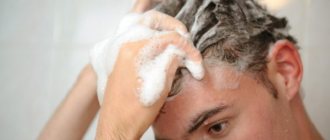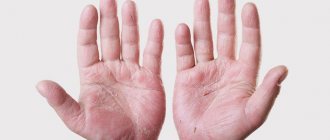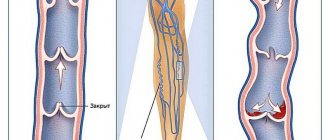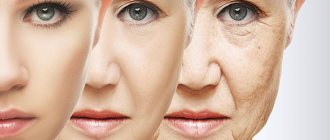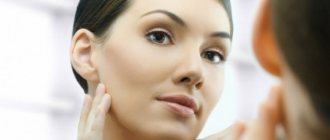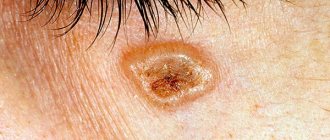At dry skin the natural regulation of fat and moisture is disrupted. The skin becomes rough and brittle, tense and in extreme cases develops cracks and dehydration eczema. Dry skin is a common symptom, especially in older people, because skin moisture naturally decreases as we age. In addition to this biological factor, numerous external factors such as cold, heat, malnutrition or various diseases are considered as a cause. Read here how dry skin develops and what you can do about it.
Description
Dry skin feels rough and brittle, tight, scaly and itchy. Red spots often appear. It is finely porous and forms cracks. Cold or heat can easily irritate them. In extreme cases, we are talking about the so-called drying out eczema: the skin breaks down and becomes inflamed. Dry skin is especially common on the face. But the lower limbs, legs, feet, arms, elbows and forearms can also be affected.
The tasks of the skin are varied: it protects against external influences such as ultraviolet radiation, pathogenic microorganisms or mechanical injuries, regulates body temperature and water balance. Through the skin, people feel touch and pain or secrete sweat and other substances. When the skin is dry, these important functions are partially impaired.
Treatment with pharmaceuticals
A deficiency of vitamins, micro- and macroelements, and minerals primarily affects the condition of the skin. It becomes dehydrated, becomes wrinkled, dry, flabby. In order for the body to have enough nutrients, they are introduced into the body, including healthy foods in the menu.
Note! If xerosis is severe, then it is not possible to achieve a therapeutic effect by adjusting the diet alone. For treatment to be effective, you need to take vitamin supplements. Neurovitan, Vitrum Beauty, Alphabet Cosmetic and other vitamin complexes can be purchased in pharmacies.
The skin of your hands needs careful care and attention. Your care should include creams and oils, masks, baths, and wraps. It is important to lead a healthy lifestyle, eat right, and if there is a deficiency of vitamins in the body, take vitamin complexes.
Causes and possible diseases
Typically, the sebaceous and sweat glands form a water-fat mixture, which keeps the skin elastic. Dry skin occurs when the sebaceous glands are no longer rich in oil and moisture regulation is disrupted. In addition to external influences and biological factors, diseases can also be considered as triggers.
External factors
- Weather can affect your skin. If you sweat in the summer, fluid is released through the skin and the skin dries out faster. Air conditioning and sunlight enhance this effect. When the outside temperature is 8°C or lower, the body stops producing sebum. In addition, people sweat a lot in the cold, so less water enters the epidermis in winter. Result: the fat and water balance of the skin is disrupted and the skin dries out. Wind, humid and warming air stimulate dehydration. Particularly affected are parts of the body that are not protected by clothing, such as the face, lips and hands.
- Diet also plays a role in skin condition. Malnutrition (especially if you are underweight) contributes to the development of dry skin. Not drinking enough fluids leads to a lack of fluids, which can also cause dry skin. Consumption of alcohol and nicotine increases the risk of dry skin.
- Stress and mental tension can take a toll on the skin and cause dryness.
- Dry skin can also be a side effect of medications that affect the body's fluid balance or certain gland functions. These include cortisone skin creams, retinoids (used for acne and psoriasis), diuretics (water flushing medications), and chemotherapy drugs (to treat cancer). Cancer treatment can also cause dry skin.
Biological factors
- As we age , skin moisture naturally decreases. This process is enhanced by the fact that the skin binds less moisture and the sweat glands produce less sweat.
- Hereditary predisposition also plays a role.
Diseases
Apart from skin conditions associated with dry skin, there are a number of other conditions in which dry skin is a symptom.
The main diseases with dry skin are:
- eczema
- allergies
- psoriasis
- contact eczema (rash)
- Ichthyosis (also called fish scale disease, an inherited disease of the top layer of the cornea)
- oral rose (rash around the mouth)
- leg ulcer
- diabetes
- hypothyroidism
- intestinal diseases (such as Crohn's disease or inflammatory bowel disease)
- gastritis
- Zollinger-Ellison syndrome (increased production of gastrin gas causes excessive stomach acid and causes gastrointestinal ulcers)
- celiac disease (a chronic disease of the small intestinal mucosa due to gluten intolerance)
Diseases with this symptom
Find out here about the diseases that can cause dry skin:
- metabolic syndrome
- gastritis
- Crohn's disease
- hypothyroidism
- thyroiditis
- seborrheic
- stomach ulcer
- psoriasis
- eczema
- ulcerative colitis
Remedies for dry hands
The cosmetology industry produces a variety of hand care products.
Creams
Creams for very dry hand skin are divided into nourishing, moisturizing, therapeutic, protective, and anti-aging. Many of them combine several caring areas. Traditionally, moisturizing formulations are applied to the skin during the day, and nourishing formulations are applied at night.
Advice. Moisturizer should not be applied to the skin immediately before leaving the house when it is cold and frosty outside. This condition applies not only to the skin of the hands, but also to the body and face. The moisture contained in the cream freezes, and instead of doing good, it does harm. After application, you need to wait 30 minutes to allow the cream to absorb.
The cream is applied, distributing it with massage movements, patting the palm of the other hand, rubbing palm against palm.
Important! The use of cosmetics may cause allergic reactions. If after using it the skin begins to itch and/or signs of irritation appear, you should not continue to use this product.
Oils
By the condition of the skin of the hands, you can determine what age a woman is. To deceive nature and make the skin velvety, soft, and remove age spots, oils are used. Butter and cream are distinguished by both composition and consistency. They are oilier and more effective in moisturizing and nourishing the skin. There are essential and base oils. The latter are obtained from seeds, fruits, grains of plants; they have either no aroma at all, or a subtle, unobtrusive one. Base oils can be applied to the skin undiluted and pure. The use of oils is especially useful in winter. They are applied to the skin in drops, using a fingertip to drive in.
The most popular base oils for dry skin are:
Hand oil
- Almond. It moisturizes and nourishes the skin well, smoothes out wrinkles;
- Olive. It has antioxidant properties and has a positive effect on the condition of the skin, relieving irritation and inflammation, giving softness and elasticity;
- Shea butter. Heals wounds, moisturizes and nourishes the skin, makes the skin of the hands silky;
- Avocado oil. It has regenerating properties and promotes the healing of cracks and wounds, increases the elasticity of the skin, and increases its protective properties;
- Sea buckthorn. Wound healing, softens and nourishes dry skin well.
Ointments
If there is a crack in the skin or severe irritation, resort to ointments. Well-proven ointments:
- for quick healing - Bepanten, Levomekol;
- to relieve inflammation - Boro plus;
- for the treatment of fungal skin infections - Lamisil.
Apply the ointment directly to the affected area or first to the tip of the finger, then with a driving motion to the problem area.
When should you see a doctor?
If you have dry skin or aging skin, well-chosen skin care and protection products will help. You should see a doctor if:
- You have been suffering from dry skin for a long time, and the cream does not relieve the symptoms
- Dry skin occurs suddenly and for no apparent reason
- The skin hurts, turns red and becomes inflamed.
Even if you experience additional symptoms such as hair loss, headaches, dizziness and nausea, significant weight gain or loss, extreme thirst, frequent urination, or internal anxiety and restlessness, you should definitely consult a doctor.
Dry skin on feet and itching - how to soften dry feet
Apple butter will help get rid of dry feet. The first way is to finely chop an apple and boil it in a small amount of milk. The resulting paste is cooled and applied to the feet for half an hour.
The second is to grate a couple of peeled apples on a fine grater. Add 4 teaspoons of olive oil and half a glass of curdled milk. Apply for half an hour and rinse.
Sour cream, kefir and whey perfectly soften the skin. You just need to smear your feet with them twice a week for a month. The simplest cream can be made from full-fat, unsweetened yogurt and a few drops of olive oil.
You can also prepare the cream from regular baby cream, adding 3 drops of glycerin and one drop each of an oil solution of vitamins A and E. There will definitely not be an allergy to such a product.
Useful recommendation! Use natural vitamin E oil. It can be applied to dry areas of the skin or added to your favorite hand, foot, or body lotion. Pure Vitamin E Oil, also formulated with 5 essential natural oils - almond, apricot, avocado, sunflower and wheatgerm - restores softness to the skin.
What does the doctor do?
Your doctor may ask you when your skin becomes so dry, whether you changed your diet before your skin became dry, or whether you are taking medications regularly. The diagnosis can also help with questions about possible underlying symptoms, allergies, or underlying medical conditions that cause dry skin, such as diabetes.
Physical examinations
After this, the doctor performs a physical examination. You can consult a dermatologist. This examines the changed areas of the skin using a magnifying glass or microscope. In this way the following can be checked: the water content of the leather, the fat on the surface of the leather or the roughness of the leather. Allergy testing can rule out a hypersensitivity reaction as the cause of dry skin.
Laboratory tests
In addition, special blood or urine tests may be helpful. Imbalances in salt water content, deficiencies or hormonal imbalances may be identified. Examination of tissue samples (biopsy) allows diagnosis of psoriasis or ichthyosis. Other conditions that cause dry skin can be identified by stool examination, colonoscopy, ultrasound, or x-ray, among others.
Treatment
Treatment for dry skin depends on the cause. For example, your dermatologist may use medications that contain cortisone or recommend skin care products specifically designed for your skin that will moisturize your skin. Underlying conditions such as atopic dermatitis or diabetes should be treated accordingly.
Important Research
These studies help to find out the reasons for complaints:
- blood collection
- blood analysis
- colonoscopy
- intestinal examination
- gastroscopy
- chair examination
- Analysis of urine
Tips for daily care
To restore a beautiful complexion, it is important to follow these recommendations:
- avoid fatty and sweet foods, eat more fruits and vegetables;
- stop drinking alcohol and smoking;
- use peeling and moisturizing during care;
- increase your intake of vitamin C in natural form or by taking vitamin complexes;
- drink more fluids, treat the skin surface with thermal water throughout the day.
You need to start with proper cleansing. You need to wash your face twice a day. Washing too often leads to dryness. To wash your face, use warm rather than hot water, then rinse your face with cold water and wipe it with an ice cube. Ice can be made from a herbal infusion, such as chamomile. If your skin is too dry, micellar water is used primarily to cleanse it and remove makeup.
When choosing a cleanser, you need to pay attention to the word “Exfoliant”, this means that it is able to exfoliate dead cells. If you feel dry, you should use products with intense hydration; if you feel oily, use products labeled “oil-free.”
Also in the section: Express facial skin care
When using decorative cosmetics, it is recommended to apply a primer first. This product fills pores and uneven areas, visually improving the texture of the skin surface. For oily skin, it is necessary to use mineral-based mattifying products, avoid creamy textures and give preference to powder or liquid foundation. It is advisable to choose cosmetics marked “non-comedogenic”. If you have dry skin, you should avoid using powder and use liquid or cream products.
In addition to daily care, it is recommended to regularly use home or professional remedies to improve the color of the skin surface.
Home Recipes
There are many ways to improve your complexion at home:
- for instant results, you can use apricot or banana puree as a mask;
- make a mixture of ground mint leaves and water, apply morning and evening, the effect is noticeable within a week;
- soak a few almonds in water, after 12 hours, peel them, grind them and mix with milk to form a paste; It should be applied at night and washed off with cool water in the morning; the effect is clearly visible after 15 days;
- Wipe your skin daily with fresh cow's milk.
To improve the effect, you can use masks for dull complexion:
Berry and citrus masks can be used once every 10-14 days, sour cream, clay and curd masks - weekly.
Additionally, walks in the fresh air, good sleep, elimination of constipation, and fortified nutrition are recommended.
Comprehensive home care, including a mask, hardware procedure and moisturizer, will help quickly improve your complexion and maintain the result for a long time.
Professional chemical peeling
Cosmetical tools
To choose a product that improves skin color, you need to pay attention to its packaging. Special cosmetics for this purpose are labeled “Radiance”. It consists of particles that reflect light and visually impart shine - pearl dust, mineral particles, mica. Examples of such tools:
- foundation with radiance effect SPF 15 True Radiance (Clarins);
- night cream Radiance in a Flash (Guerlen);
- anti-wrinkle facial serum Phytoplan Broccoli Wrinkle Radiance Power Ampoule (Ladykin);
- day cream against the formation of age spots Neotone Radiance SPF 50+ (IsisPharma);
- Endermology Radiance Brightening Serum (LPG);
- anti-aging cream for brightening the face Christina Wish Radiance Enhancing Cream and others.
Most of these cosmetics not only mask external imperfections, but also moisturize, fight wrinkles and improve overall condition.
To prevent changes in complexion, for example, in a metropolis, it is necessary to choose products with maximum hydration for daily care, and also treat the skin with thermal water during the day. Useful components in cosmetics, the presence of which has a beneficial effect on the condition of the epidermis:
- vitamins A, E, C (tocopherol, retinol, ascorbic acid);
- wheat germ oil;
- hyaluronic acid;
- arbutin and other substances of plant origin.
To “mask” a dull complexion, while simultaneously providing hydration, nutrition, and mattification, you can use BB or CC cream.
